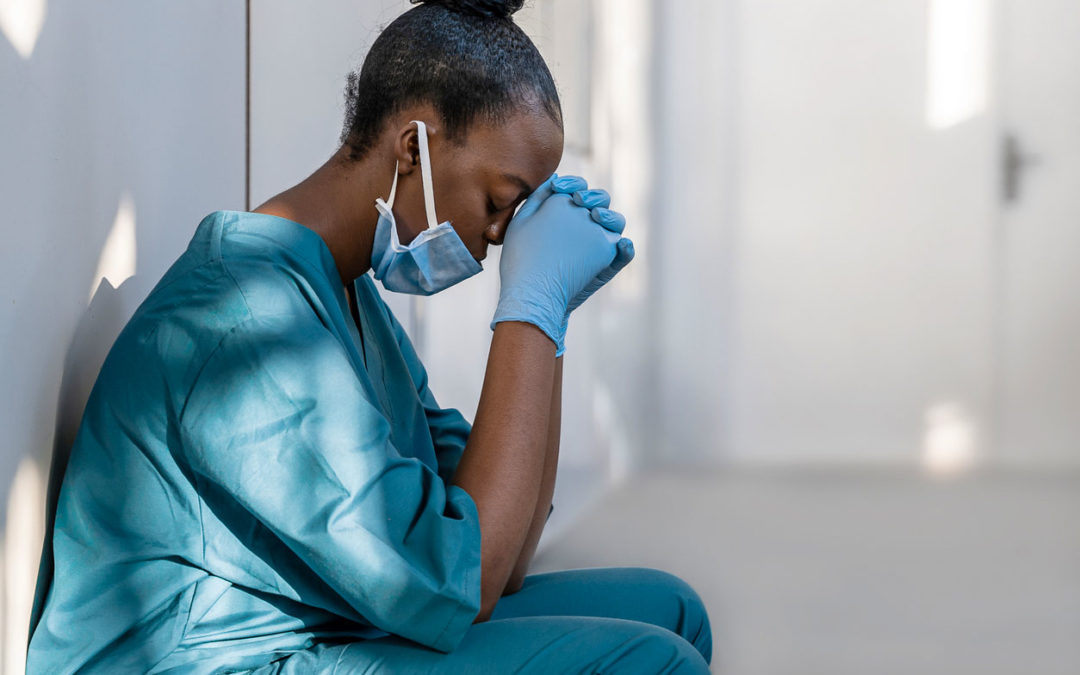Today marks Post Traumatic Stress Disorder (PTSD) Awareness Day to educate the public about a condition that can strike anyone. PTSD, an often-misunderstood ailment, is treatable but can have lasting impacts if people don’t recognize it in themselves or in others.
Nick Benas QMHC and Michelle Hart LICSW are authors of Mental Health Emergencies, a book that examines how anyone, but particularly medical and emergency professionals or those in roles such as teaching or human resources, can respond to a mental health crisis including post traumatic stress disorder. Providing the proper response and supports can open up the patient to a wide range of effective and needed treatment without the stigma they often feel in their daily lives.
Michelle Hart answered a few questions from Minority Nurse to help promote understanding of this condition, its causes, its treatments, and the sensitivity needed to help people who have it.
Please tell me how PTSD develops. Does it impact all ages?
PTSD develops after an exposure to real or perceived threat and/or witnessing or experiencing a traumatic event. Vicarious trauma can occur by listening to another’s detailed account of a traumatic event. It can impact all ages and babies have been born with high levels of cortisol, which is an indication of PTSD, after having a parent while in utero experience PTSD. The level of a person’s resiliency is a factor whether or not the effect of a trauma will eventually lead to PTSD.
Is there effective treatment for PTSD?
The most effective researched based therapeutic approach to PTSD is Dialectical Behavioral Therapy, DBT. However, many aspects of Cognitive Behavioral Therapy (CBT) have been proven to reduce symptomology.
How can nurses recognize signs of PTSD in patients or in those close to them?
One of the most common signs of PTSD is derealization or depersonalization. Examples of this include the following:
- The inability to experience a range of natural occurring emotions
- Lagging mind/body connection
- A person who is injured who does not experience pain in accordance with the level of injury
- A flat affect of emotions, not able to cry or laugh when situationally appropriate
- A person who stares off into space when discussing an event or appears to be re-experiencing the event when telling story
- Heightened awareness or hyper-vigilance in a safe environment
- Sleep disturbance, either not able to sleep or frequent nightmares, is a common occurrence with individuals experiencing PTSD
Finally, if a person actually states they feel traumatized they should be acknowledged in any event. It is usually not a major event that happens, but it can be small events over a period of time as well. Listen to a person when they are reporting the above stated symptoms.
How can nurses help someone with PTSD? In an emergency? In a non-emergency?
Being self aware is the major point of helping someone in an emergency with PTSD. Other important ways to help include the following and this all holds true for emergency and non-emergency situations. :
- Move with intention and do not make sudden movements.
- Explain and paraphrase what is happening during the emergency.
- Listen to an individual and do not argue.
- Allow a person to speak without interruption.
- Do not ask for details that do not matter.
- It is not effective to relive or retell the event as a matter of helping someone.
- Keep your voice calm and do not become over animated.
- Ask the person what they might need to feel safe for that moment.
- Keep the person safe and do not allow them to be alone in the midst of a panic attack associated with PTSD.
What are some common misconceptions about PTSD?
The biggest misconception of PTSD is that you have to be involved with something major. PTSD is individualized and can be compounded by many factors. The event which leads to the PTSD diagnosis might not be the overall cause. Bear in mind that negative childhood experiences can factor into a person who experiences PTSD. Certainly we hear about the large scale events which cause a person to experience PTSD, but never rule out a person experiencing PTSD based upon ones own thoughts of how traumatic an event was for them.
What gives those with PTSD hope?
PTSD is a treatable ailment. Most clinics have a variety of specialists who can help with PTSD. Help a person understand that the emotions and the things they are experiencing are real for them. Allow them to understand they are not alone and help them give a name to what they are experiencing. There are effective treatments available to help with the treatment and lessen the symptoms of PTSD. Have local resources available to give to patients and/or help them get in contact with assistance.
How can nurses spread that message?
The best way to help everyone is to DESTIGMATIZE PTSD. It is not an us-or-them diagnosis. Everyone in their lifetime will experience an event that could possibly cause PTSD. Allow others to have their own experiences without personal bias. We are not here to judge, just allow others to heal.
- Why Finding a Nursing Community Is Important - May 10, 2024
- A Camp Nurse Volunteer Shares the Joy - April 30, 2024
- Is the FNP Program Right for You? - April 24, 2024



